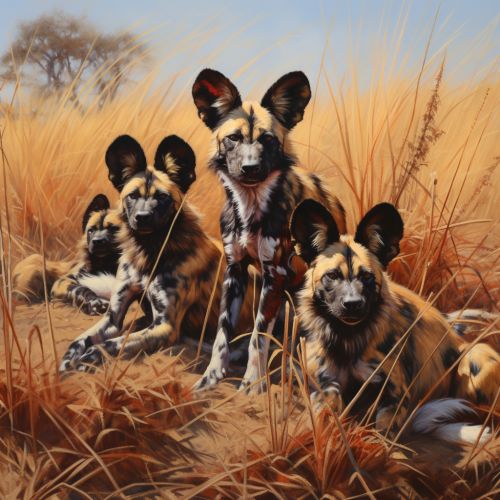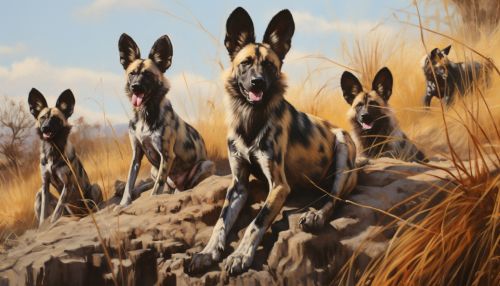African Wild Dogs
Overview
The African wild dog (Lycaon pictus) is a canid native to sub-Saharan Africa. It is the largest indigenous canid in Africa, and the only extant member of the genus Lycaon, which is distinguished from Canis by its fewer toes and dentition, which is highly specialized for a hypercarnivorous diet.


Description
African wild dogs are highly distinctive in their appearance, with a patchy, mottled coat that is unique to each individual. They are characterized by their large, rounded ears, and a long, bushy tail with a white tip. The dogs have a lean, muscular body, which is adapted for endurance hunting.
Distribution and Habitat
African wild dogs are found primarily in savanna and arid zones, generally avoiding forested areas. This species was once widespread across Africa, but populations have been drastically reduced and fragmented due to human activities such as habitat destruction and persecution.
Behavior and Ecology
African wild dogs are social animals, living in packs with a strict hierarchical structure. The pack is led by a monogamous breeding pair, and pack members cooperate in caring for the young and hunting for food. They are primarily diurnal, and their hunting strategy relies on endurance rather than speed.
Diet and Hunting
African wild dogs are hypercarnivores, with a diet that consists almost entirely of meat. They primarily prey on medium-sized ungulates, which they chase down in long, open chases. Their hunting strategy is highly cooperative and involves a high degree of communication between pack members.
Reproduction and Lifecycle
The breeding pair in a pack are the only individuals that breed, with the female giving birth to a litter of pups once a year. The entire pack is involved in the care of the pups, with non-breeding adults acting as helpers.
Conservation Status
The African wild dog is currently classified as Endangered by the IUCN, with populations continuing to decline due to habitat loss, human persecution, and disease. Conservation efforts are ongoing, with a focus on protecting habitat and mitigating human-wildlife conflict.
